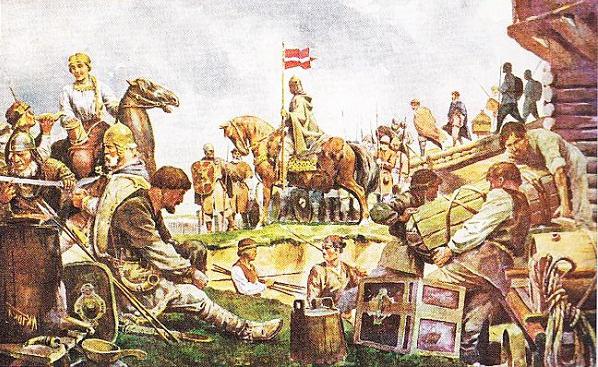After the adoption of the baptism of Rus from Byzantiumremained in the religious subordination of her capital - Constantinople. Here was the patriarch (the head of the whole church). He appointed the head of the Orthodox Church in Russia - the Metropolitan. As a rule, this position was occupied by the Greeks. In 1308, the patriarch decided to place the hegumen Peter in the place of the metropolitan, the monastery abbot in the southern Volyn lands. It should be noted that Tver promoted his candidate for the post of Metropolitan. But the choice of the patriarch fell on Peter. To somehow "balance" the election, the patriarch sent Peter to Vladimir, and not to the south.
However, Tver expressed dissatisfaction, and her princescould not get along with the new metropolitan. Peter found support from the Moscow princes. After the Prince of Tver settled in Vladimir, the metropolitan moved to Moscow. Here Peter was very welcome. A pious and influential, beloved Peter began to elevate the prestige of the city, creating the prerequisites for the elevation of Moscow in the future.
With the support of Metropolitan Ivan Daniilovich (princeMoscow) began the construction of the first temple of stone. The Assumption Cathedral was erected in accordance with the new status of the city. Subsequently, the temple was to become the main in Russia. Metropolitan Peter ordered to bury himself in the Assumption Cathedral. He died in 1326 and was buried in a still unfinished church. The Cathedral was consecrated in 1327. From that moment the church became the burial vault of the metropolitans of Russia.
The reasons and conditions for the elevation of Moscow
At Ivan Daniilovich in 1327 appearedthe opportunity to deal with Tver. At that time, the collection of the Mongolian tribute was carried out by the Baskakov, the khan's collectors. Expressing dissatisfaction, the Tver people rebelled against Shchelkan's Baskak (Cholkhan). The Moscow prince immediately reported this to the Horde. As a reward for his service, Ivan Daniilovich received a shortcut from the khan to the grand reign.
Prince Alexander Tver was hiding in Pskov.Ivan Daniilovich decided to get rid of the Tver prince forever. Arriving in the Horde, he slandered Alexander. Khan summoned the Tver prince to himself and executed him and his son. Ivan Danilovich Khan made the collector of tribute from all over the Russian land.
Since that moment an intensive rise has begunMoscow. The city itself and the prince rich. New lands brought a lot of income. After the accession of Mozhaysk and Kolomna in the hands of the Moscow prince, the whole riverbed of the Moscow River turned out to be an important trade route. The Principality received not only big duties, but also new opportunities for trade development. The rise of Moscow took place quite quickly. In the hands of Ivan Daniilovich, a part of the tribute that he collected for the Horde settled. The prosperous prince began to call Kalita ("money bag", "purse"). Money Ivan Kalita began to invest in the elevation of Moscow.
The means of the prince contributed to the beginninglarge-scale stone construction. In 1329 a church was erected in honor of the Byzantine theologian, who was ranked as a saint, John Climacus. Later, on the site of the church, the bell tower "Ivan the Great" was built. In 1330 the church of the Savior on Bor (Transfiguration) of Spassky Monastery was built. By 1333 the Archangel Cathedral was built (presumably, instead of the church of Michael the Archangel), which later became the burial place of the princes of Moscow.
Since the reign of Ivan Kalita in Russianthe word "Kremnik" ("The Kremlin") entered. So called the Moscow fortress. Denoted this word "inner city fortress", "chopped strengthening". The last contribution to the rise of Moscow, Ivan Kalita, was made by erecting the oak walls of the Kremlin.
In the will of Ivan Kalita contains enoughan extensive list of possessions, which the prince distributed. This document mentions the village of Kolomna (Kolomna) and many others that have survived to this day.












